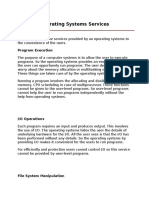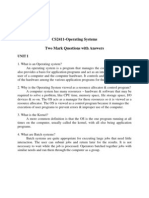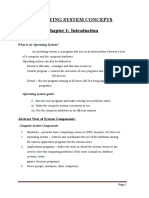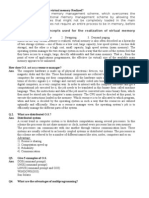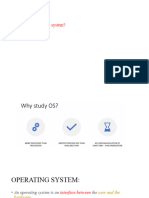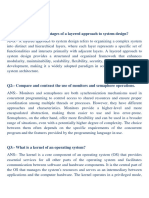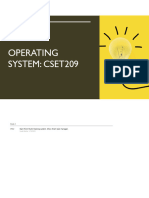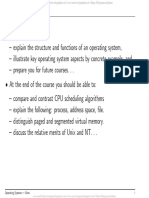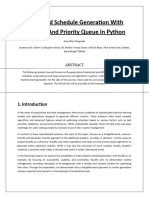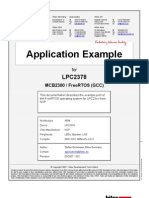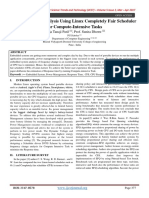0% found this document useful (0 votes)
7 views10 pagesAssignment 1 OperatingSystemConcepts CMPLT
The document outlines various concepts related to operating systems, including objectives, system calls, and memory management techniques. It discusses topics such as process management, multithreading, scheduling, deadlocks, and synchronization problems like the Dining Philosopher's Problem. Additionally, it covers memory management strategies like demand paging, fragmentation, and page replacement algorithms.
Uploaded by
MarkCopyright
© © All Rights Reserved
We take content rights seriously. If you suspect this is your content, claim it here.
Available Formats
Download as DOCX, PDF, TXT or read online on Scribd
0% found this document useful (0 votes)
7 views10 pagesAssignment 1 OperatingSystemConcepts CMPLT
The document outlines various concepts related to operating systems, including objectives, system calls, and memory management techniques. It discusses topics such as process management, multithreading, scheduling, deadlocks, and synchronization problems like the Dining Philosopher's Problem. Additionally, it covers memory management strategies like demand paging, fragmentation, and page replacement algorithms.
Uploaded by
MarkCopyright
© © All Rights Reserved
We take content rights seriously. If you suspect this is your content, claim it here.
Available Formats
Download as DOCX, PDF, TXT or read online on Scribd
/ 10

